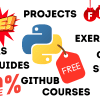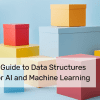Latest Posts |
|---|
|
From Our Partners |
|---|
More Recent Posts
- Is Data Science a Bubble Waiting to Burst?
- Free Google Cloud Learning Path for Gemini
- 7 End-to-End MLOps Platforms You Must Try in 2024
- 7 Python Libraries Every Data Engineer Should Know
- Integrating Generative AI in Content Creation
- 5 Free Advanced Python Programming Courses
- Retrieval Augmented Generation: Where Information Retrieval Meets Text Generation
- 7 Best Platforms to Practice Python









